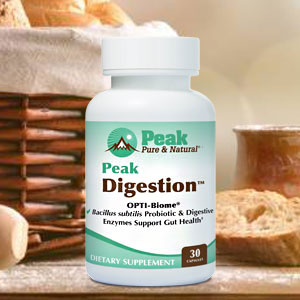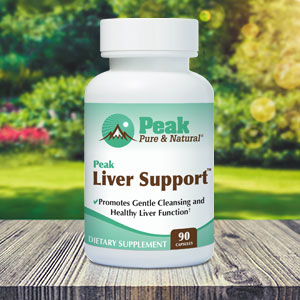Get Easy Health Digest™ in your inbox and don’t miss a thing when you subscribe today. Plus, get the free bonus report, Mother Nature’s Tips, Tricks and Remedies for Cholesterol, Blood Pressure & Blood Sugar as my way of saying welcome to the community!
What do antifreeze, dog food, ice cream and your cosmetics have in common?

Let’s say you’re at the grocery store and have a sudden, overwhelming craving for rocky road ice cream. You pick up a carton and, out of habit, take a look at the label. It contains all sorts of fun stuff — tetrasodium pyrophosphate, high fructose syrup, modified food starch, artificial flavors. One ingredient you probably won’t see on the label, though, is propylene glycol… but that doesn’t mean it’s not in there.
Propylene glycol is a chemical compound found in antifreeze, cosmetics, pet food and lots of human food, too… including ice cream.
In the case of ice cream, propylene glycol is often lumped in with “natural flavors” or “artificial flavors” in the ingredient list. There’s also a rule called an “Industry Standard” that allows manufacturers to leave certain ingredients off an ingredient list if everyone in the industry uses it.
Most ice cream manufacturers do add a bit of propylene glycol to their product (even some natural companies) because it makes ice cream more scoop-able and prevents ice crystals (it’s used in anti-freeze, after all). That means ice cream manufacturers technically don’t have to state they use it.
Now, the fact that the anti-freeze you use in your car and the ice cream you eat on a warm summer day share an ingredient is alarming, to say the least. But don’t get too concerned. Eating ice cream containing propylene glycol is nowhere near as dangerous as, say, drinking anti-freeze.
Related:How dangerous are the unregulated ingredients in your makeup and shampoo?
In fact, a lot of anti-freeze manufacturers still use a chemical that’s related to propylene glycol but far worse in their products — ethylene glycol. Ethylene glycol is extremely toxic and can kill you. Propylene glycol is used in the “non-toxic” version of anti-freeze.
Like other chemical food additives, many people can eat propylene glycol without any immediate problems. But when you’re adding any unnatural ingredient to food, there are always some risks…
5 health conditions caused by propylene glycol
Propylene glycol is far from the most dangerous ingredient hiding in your food. But research shows it can cause a few health concerns, including:
- Rashes and allergic reactions. Propylene glycol is in a lot of personal care products, and some people get contact dermatitis (AKA a red, itchy rash) when they come into contact with it.
- Kidney and liver toxicity. Propylene glycol is safe in small doses. But in larger doses, it can take a toll on your kidneys and liver. You won’t get a large enough dose in your food to cause this problem. But high doses of the chemical are added to many IV medications. People with liver or kidney disease should be cautious about taking medications that contain propylene glycol.
- Neurological problems. Propylene glycol in medications has caused seizures, convulsions, and other neurological symptoms in some people. But once again, this typically only occurs at doses much higher than you get in food.
- Heart risks. Animal studies show that high doses of propylene glycol can cause dangerously low heart rates and blood pressure. It can even cause the heart to stop. There have been a couple of cases where children receiving high doses had problems with heart function too.
- Chemical absorption. Perhaps the most alarming thing about it is that it’s a “penetration enhancer.” That means it allows stuff to penetrate your skin more easily. If you’re using personal care products on your skin that contain propylene glycol and other chemical ingredients, it will allow more chemicals to enter into your bloodstream.
Purging propylene glycol from your home
If you prefer to play it safe when it comes to chemical ingredients in your food and personal care products, then you probably want to avoid propylene glycol. But how exactly do you do that?
I mentioned before that propylene glycol isn’t always mentioned on ice cream labels. But if your ice cream scoops like a dream the second you take it out of the freezer, there’s a good chance propylene glycol is the reason. Other foods that are likely to contain this chemical include:
- Soft drinks
- Marinades and dressings
- Cake mix
- Frosting
- Popcorn
- Food coloring
- Fast food
- Bread
- Dairy products
- Vanilla and almond extracts
- Baked goods
- Candy
- Prepared food
It’s also found in pharmaceutical products (like the IV medications I mentioned above), pet food and personal care products. Some of the most common personal care products you’ll find it in include:
- Makeup
- Lotion and skin creams
- Ointments
- Deodorant
- Shampoo and conditioner
- Mouthwash
- Body wash
- Baby wipes
I should also mention that propylene glycol goes under a few different aliases. When you’re reading labels, make sure to look for propylene glycol mono, propylene glycol diester, E1520 and 1520.
Editor’s note: Have you heard of EDTA chelation therapy? It was developed originally to remove lead and other contaminants, including heavy metals, from the body. Its uses now run the gamut from varicose veins to circulation. Click here to discover Chelation: Natural Miracle for Protecting Your Heart and Enhancing Your Health!
Sources:
Propylene Glycol in Food: Is This Additive Safe? — Healthline
Antifreeze in Your Ice Cream — The Healthy Home Economist
Propylene glycol — EWG’s Skin Deep Cosmetics Database
Propylene glycol: an often unrecognized cause of allergic contact dermatitis in patients using topical corticosteroids — Skin Therapy Letters
Recognition, treatment, and prevention of propylene glycol toxicity — Seminars in dialysis
Propylene Glycol in Contact Dermatitis: A Systematic Review — Dermatitis
Questions and Answers about Propylene Glycol — International Food Information Council Foundation
Propylene Glycol — CosmeticsInfo.org














